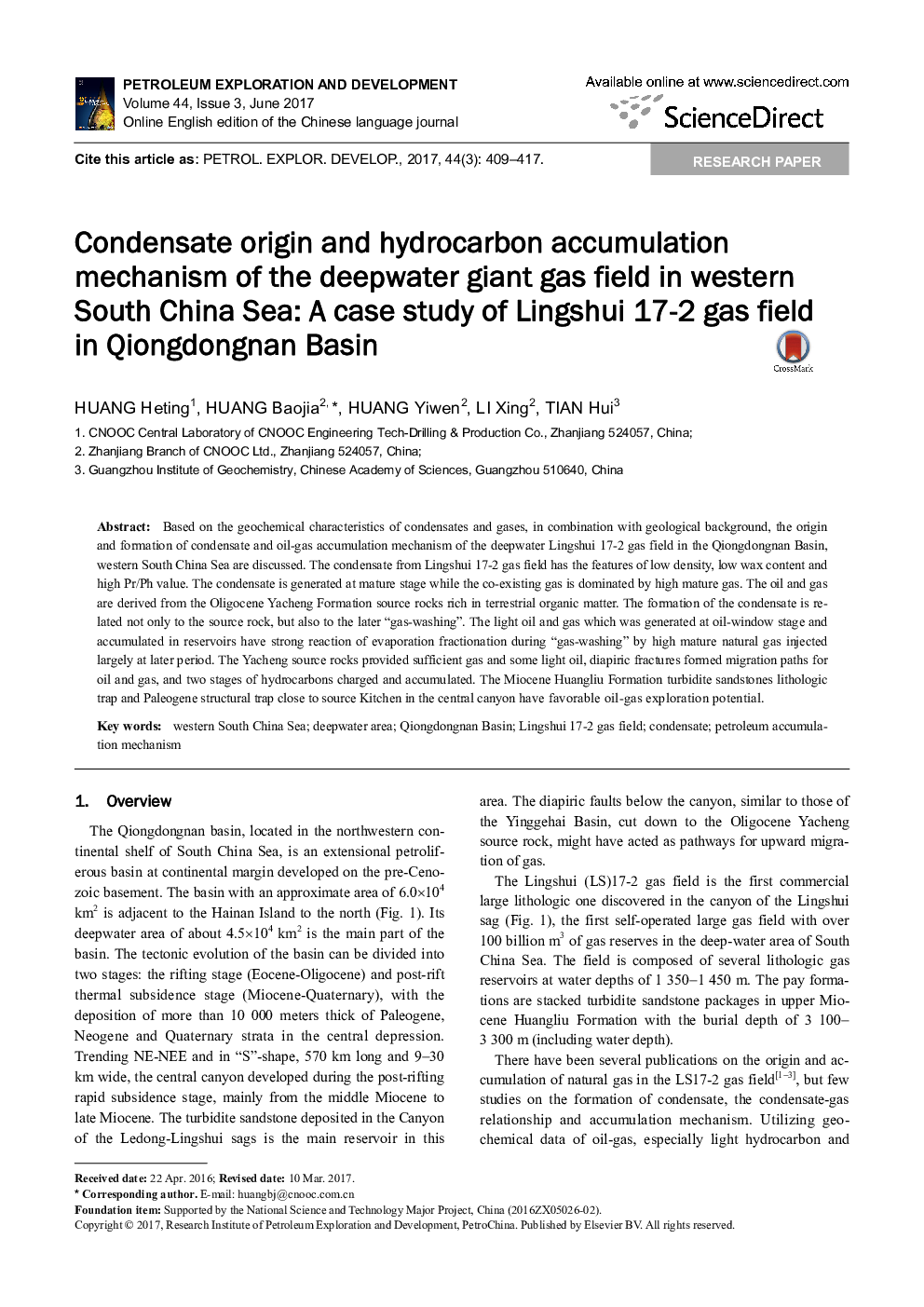| Article ID | Journal | Published Year | Pages | File Type |
|---|---|---|---|---|
| 8912256 | Petroleum Exploration and Development | 2017 | 9 Pages |
Abstract
Based on the geochemical characteristics of condensates and gases, in combination with geological background, the origin and formation of condensate and oil-gas accumulation mechanism of the deepwater Lingshui 17-2 gas field in the Qiongdongnan Basin, western South China Sea are discussed. The condensate from Lingshui 17-2 gas field has the features of low density, low wax content and high Pr/Ph value. The condensate is generated at mature stage while the co-existing gas is dominated by high mature gas. The oil and gas are derived from the Oligocene Yacheng Formation source rocks rich in terrestrial organic matter. The formation of the condensate is related not only to the source rock, but also to the later “gas-washing”. The light oil and gas which was generated at oil-window stage and accumulated in reservoirs have strong reaction of evaporation fractionation during “gas-washing” by high mature natural gas injected largely at later period. The Yacheng source rocks provided sufficient gas and some light oil, diapiric fractures formed migration paths for oil and gas, and two stages of hydrocarbons charged and accumulated. The Miocene Huangliu Formation turbidite sandstones lithologic trap and Paleogene structural trap close to source Kitchen in the central canyon have favorable oil-gas exploration potential.
Keywords
Related Topics
Physical Sciences and Engineering
Earth and Planetary Sciences
Geochemistry and Petrology
Authors
Heting HUANG, Baojia HUANG, Yiwen HUANG, Xing LI, Hui TIAN,
